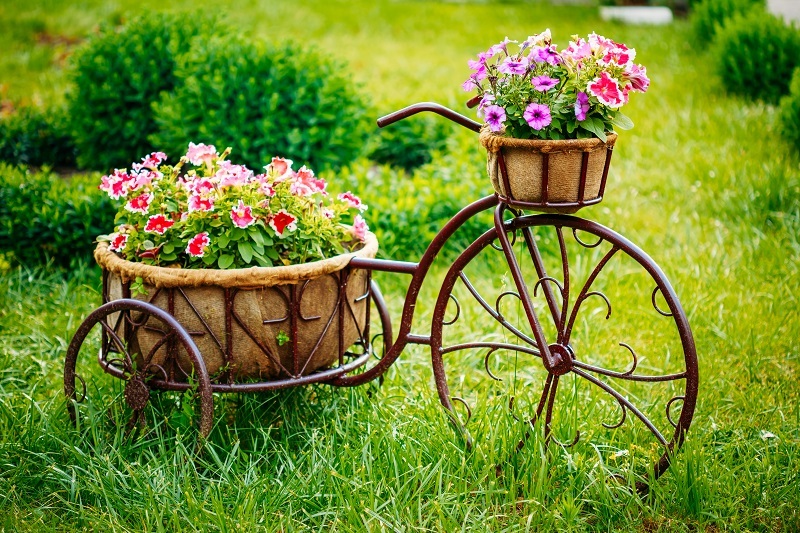Simple Steps to Orchid Care
Posted on 14/08/2025
Simple Steps to Orchid Care: The Ultimate Guide for Healthy, Flowering Orchids
Orchids are among the most beautiful and captivating plants you can grow at home. While many people believe these exotic flowers are difficult to care for, the truth is that with the right knowledge and a few simple steps, anyone can enjoy the beauty of healthy, thriving orchids. Whether you're a seasoned green thumb or a novice just starting your plant journey, this comprehensive article will guide you through essential orchid care techniques to ensure your flowers flourish and bloom year after year.
Understanding Your Orchid: The Basics
The foundation of successful orchid care lies in understanding your plant's natural habits and requirements. Orchids belong to a vast family (Orchidaceae), with thousands of species and hybrids. The most common types found in homes include Phalaenopsis (moth orchid), Cattleya, Dendrobium, and Oncidium.
- Phalaenopsis: Known for their ease of care and long-lasting blooms.
- Cattleya: Famous for stunning, fragrant flowers in vibrant colors.
- Dendrobium: Popular for their hardiness and abundant clusters of blossoms.
- Oncidium: Also called the "dancing lady" orchid, with bright, fluttering flowers.
While orchid varieties differ in appearance and growth habit, they all share several care essentials. Follow these easy orchid care steps to give your plants the best chance at vibrant health and stunning blooms.

Step 1: Choosing the Perfect Spot
Light Requirements for Orchids
One of the most crucial orchid care tips is providing the right amount of light. Orchids thrive in bright, indirect sunlight. Too little light inhibits flowering, while too much can scorch the leaves. A good rule of thumb is to place your orchid near an east- or west-facing window, protected by sheer curtains.
- Signs of Too Much Light: Yellow, sunburned leaves with brown spots.
- Signs of Too Little Light: Dark green leaves and lack of blooms.
Tip: If natural light is inadequate, consider using fluorescent grow lights to supplement.
Step 2: Mastering Orchid Watering Techniques
How Often Do You Water Orchids?
Improper watering is the number one cause of orchid problems. Overwatering is especially harmful, leading to root rot and fungal issues. Most orchids prefer to dry out slightly between waterings. A good practice is to water thoroughly when the potting mix feels dry to the touch--but not bone dry.
- For most orchids, watering once every 7-10 days is sufficient.
- During summer or in dry climates, your orchid may need water every 5-7 days.
- In winter, reduce frequency to every 10-14 days.
Watering tip: Use tepid water and avoid letting the pot sit in water. Orchids prefer well-drained conditions, so always discard any excess water collected beneath the pot.
Step 3: Selecting the Right Orchid Potting Mix
Orchids aren't like other houseplants--they don't grow in soil! Instead, they flourish in specialized potting mixes designed for aeration and excellent drainage. The ideal mix often contains bark, sphagnum moss, charcoal, and perlite. These materials mimic the orchid's natural habitat, allowing roots to "breathe."
- Bark-based mixes: Best for Phalaenopsis and Cattleyas.
- Moss-based mixes: Retain more moisture, suitable for Dendrobiums and Oncidiums.
Repotting orchids every 1-2 years is essential. Refreshing the mix prevents root rot and supports proper orchid health.
Step 4: Fertilizing for Robust Growth
How and When to Fertilize Orchids
Orchids benefit from regular, but light, feeding. Overfertilizing can burn the roots and do more harm than good. Use a balanced, water-soluble fertilizer (20-20-20) formulated for orchids.
- Fertilize every other watering while the plant is actively growing or blooming.
- During winter or dormancy periods, fertilize once a month or not at all.
- Mix fertilizer at half the manufacturer's recommended strength.
Tip: Flush the potting mix with clean water once a month to prevent salt buildup.
Step 5: Providing the Right Temperature and Humidity
Optimal Orchid Environment
Orchids are happiest in warm, humid conditions that mimic their tropical origins. Here's what most common types prefer:
- Daytime temperatures: 65-80?F (18-27?C)
- Nighttime temperatures: 55-65?F (13-18?C)
- Humidity: 40-70%
If your home is dry, increase humidity with a humidity tray (a shallow tray filled with water and pebbles underneath the orchid pot), regular misting, or a room humidifier.
Step 6: Pruning and Maintenance
Regular maintenance keeps your orchid tidy and encourages re-blooming. After flowers fall, cut the flower spike back, leaving two nodes on Phalaenopsis, or trim it to the base for other types. Always use sterilized, sharp scissors to prevent disease.
- Remove any dead or yellowed leaves.
- Trim dried or mushy roots when repotting.
- Clean plant leaves gently with a damp cloth to keep them dust-free.
Good hygiene reduces pest and disease risks, ensuring longevity and vigor for your orchids.
Step 7: Troubleshooting Common Orchid Problems
Identifying and Fixing Orchid Issues
Even with perfect care, orchids may occasionally face challenges. Here's how to spot and solve typical problems:
- Leaves turning yellow: Usually caused by overwatering or old age. Check roots and watering habits.
- No blooms: Check light intensity and temperature fluctuations. Some orchids require a cool period to trigger flowering.
- Sticky residue or distorted leaves: Signs of pests like scale or aphids. Treat with insecticidal soap or neem oil.
- Dark, mushy roots: Indicate root rot. Repot in fresh mix and cut away affected roots.
Don't panic if your orchid isn't perfect: Orchids are resilient, and with a little attention, most problems can be reversed.
Bonus Tips for Healthy, Happy Orchids
- Air Circulation: Orchids love fresh air. Keep them in a well-ventilated area but away from direct draughts.
- Grouping Orchids: Placing orchids close together increases local humidity.
- Watch for Dormant Periods: Many orchids rest after blooming. Let the plant recharge with less water and fertilizer during this stage.
- Seek Specific Care Guides: Research the particular needs of your orchid species for best results.

Educating Yourself: The Key to Successful Orchid Care
Orchid care may seem daunting at first, but it's incredibly rewarding once you understand the basics. Every orchid enthusiast started with the simple steps above. As your confidence grows, you'll enjoy experimenting with new orchid types and perhaps even try growing them from seed!
Summary: Simple Steps to Orchid Success
- Choose the right spot with filtered light.
- Water sparingly, allowing roots to dry between watering.
- Use orchid potting mix for healthy roots.
- Fertilize: Feed lightly during active periods.
- Maintain temperature and humidity at optimal levels.
- Prune and clean regularly to prevent disease and encourage growth.
- Troubleshoot issues early for swift recovery.
Frequently Asked Questions about Caring for Orchids
How do I encourage my orchid to bloom again?
After blooming, most orchids need a short rest period before restarting their flower cycle. Ensure your orchid gets enough light and, for Phalaenopsis, expose it to a slight nighttime temperature drop (around 55-60?F/13-16?C for a few weeks) to stimulate reblooming.
Can I use ice cubes to water orchids?
No--ice cubes are not recommended, as they may shock or damage tropical roots. Always use room-temperature water.
Why are my orchid's roots growing outside the pot?
Those are aerial roots, perfectly normal for orchids. These help absorb moisture and nutrients from the air. Do not trim unless they are shriveled or dead.
With these simple steps to orchid care, even beginners can cultivate beautiful, flowering orchids in their home or office. Remember, the journey is as gratifying as the destination--enjoy your orchids, watch them thrive, and soon you'll have a breathtaking indoor garden!Latest Posts
The Mood-Boosting Benefits of Keeping Flowers Around
8 Exciting Revelations About Sunflowers





